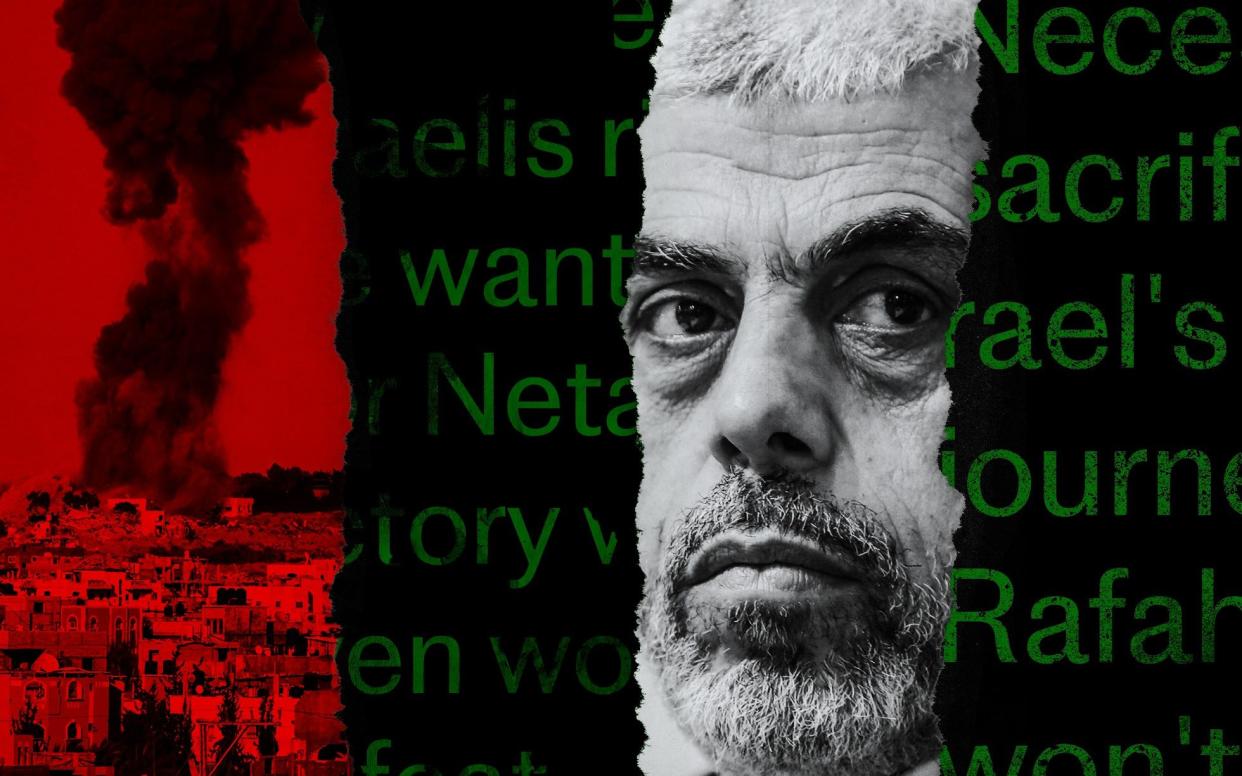Hamas terrorists are playing the West for fools

Ending the suffering endured by ordinary Palestinians in the eight months since Hamas terrorists launched their devastating attack against Israel on October 7 has been the driving motivation behind Western efforts to resolve the conflict.
While securing the release of the estimated 120 or so Israeli hostages still being held captive by Hamas is another important consideration, trying to prevent Palestinian civilians from experiencing further bloodshed seems to have been foremost in the minds of those seeking to implement a ceasefire in Gaza.
The Biden administration, in particular, remains so invested in reaching a ceasefire that it secured backing from the United Nations Security Council prior to Secretary of State Antony Blinken undertaking yet another diplomatic mission to the Middle East, his eighth since the Gaza conflict erupted.
Previous US initiatives have invariably ended with talks breaking down, generally blamed on the intransigence of Israeli Prime Minister Benjamin Netanyahu. His insistence on continuing with Israel’s military campaign to wipe the terrorist organisation off the face of the earth, even if Hamas leaders were to agree to release all the remaining Israeli hostages, is constantly cited as the reason for the failure of diplomatic efforts to result in a truce.
Yet, as is now becoming increasingly evident, it is not Netanyahu’s uncompromising approach that is thwarting peace efforts. It’s the fanaticism of Yahya Sinwar, the Hamas terrorist mastermind behind the October 7 atrocities.
The 61-year-old hardman, who once boasted of strangling one suspected Palestinian collaborator to death with his bare hands, prides himself on the profound understanding of Israel’s counter-terrorism mindset he acquired during the 22 years he spent in an Israeli prison for killing two Israeli soldiers and four Palestinians in the 1980s.
Known as “The Butcher of Khan Yunis” after the Gazan enclave where he was born, one of Sinwar’s key calculations when planning the October 7 attacks appears to have been that the inevitable military response it would provoke from Israel would ultimately play to Hamas’s advantage.
And, judging by the tranche of leaked messages Sinwar is said to have sent to other Hamas commanders in recent weeks, his ploy has worked a treat. Thanks to Sinwar’s weaponisation of the Gaza conflict, Israel generally attracts the lion’s share of global criticism for its handling of the Gaza conflict. The devious methods employed by Hamas in the interests of its own self-preservation, meanwhile, rarely attract the scrutiny they undoubtedly merit.
This is despite the fact that Hamas uses Palestinian civilians as human shields, and schools and hospitals as command and control centres. One of the more glaring examples of Hamas’s cynical duplicity emerged at the weekend when it was revealed that a Palestinian journalist who regularly wrote articles for the Western media condemning Israeli “genocide” in Gaza, himself appeared to have been using his home to hold Israeli hostages abducted during the October 7 attacks.
The willingness of Hamas commanders to indulge in the inhumane exploitation of Gaza’s civilian population is evident in Sinwar’s messages, where it is clear he is seeking to use the mounting Palestinian death toll to stall ceasefire talks.
According to details obtained by The Wall Street Journal, Sinwar believes that the Palestinian fatalities, caused in part by Hamas’s willingness to conduct its terrorist operations in densely populated civilian areas, “are necessary sacrifices”. The global criticism that is directed against Israel for its handling of the Gaza conflict means that, from Sinwar’s warped perspective, “we have the Israelis right where we want them”.
The callous disregard shown by Hamas leaders like Sinwar for the Palestinian people they are supposed to protect is instructive, and it’s an outlook that Western negotiators need to take on board in their efforts to agree a ceasefire.
From the start of the conflict, it is clear that Sinwar’s sole ambition has been to ensure that Hamas survives in some shape or form in Gaza once hostilities have ended, even if this means that only a tiny fraction remains of the estimated 24 battalions of fighters Hamas had at its disposal at the start.
This explains why, every time the likes of Blinken arrive in the region bearing new ceasefire offers, the Hamas leadership immediately resorts to its maximalist demand that it will only accept the ceasefire terms if Israel agrees to undertake a complete military withdrawal from Gaza. Not even the most conflict-averse Israelis are likely to support a deal that would enable Hamas to continue terrorising Israel’s southern border.
The other consideration that must be taken into account is that any ceasefire deal that enables Hamas to maintain any vestige of control in Gaza would be seen as rewarding its leaders for committing gross acts of terrorism. Certainly, now that Sinwar’s contemptuous attitude towards the welfare of the Palestinian people has been exposed, Western policymakers should understand that Hamas, not Israel, is the real obstacle to achieving a lasting peace in Gaza.

 Yahoo News
Yahoo News 
